No products in the cart.
Great news! The Canada Post strike is over! We’re resuming deliveries to Canada!
Excellente nouvelle ! La grève de Postes Canada est terminée ! Nous reprenons les livraisons vers le Canada !
Great news! The Canada Post strike is over! We’re resuming deliveries to Canada!
Excellente nouvelle ! La grève de Postes Canada est terminée ! Nous reprenons les livraisons vers le Canada !
[category_image]
Enzystal enteric-coated tablets, sugar-coated, blister pack of 80 pieces
$32.10
Enzystal tablets support digestion in pancreatic insufficiency, flatulence, diarrhea, IBS, and aid vitamin absorption. Pack: 192 mg pancreatin + enzymes.
Category: Gastrointestinal tract and liver
Brand: Torrent Pharma
Enzystal tablets are used for the following indications:
- replacement therapy for mild and moderate pancreatic dysfunction in chronic pancreatitis (except in cases of exacerbation of chronic pancreatitis), to improve digestive processes in ulcerative colitis, irritable bowel syndrome, as well as after gastric resection;
- for flatulence and some cases of diarrhea of non-infectious origin;
- to improve digestion in individuals with normal gastrointestinal function in case of violations of the balanced diet (eating large amounts of food, eating fatty, fried or unusual foods, irregular meals);
- in case of impaired chewing function, in conditions leading to prolonged immobilization;
- preparation for X-ray and ultrasound examination of the abdominal organs;
- as an aid for the effective absorption of fat-soluble vitamins and certain medications (PAK, sulfonamides, antibiotics).
Composition
One tablet contains (active ingredients):
- pancreatin – 192 mg (lipase 6000 IU, amylase 4500 IU, protease 300 IU);
- hemicellulase – 50 mg;
- bile extract – 25 mg.
Excipients: lactose monohydrate, magnesium stearate, colloidal anhydrous silicon dioxide, cellulose acetyl phthalate, diethyl phthalate, sugar, calcium carbonate, talc, acacia, gelatin, titanium dioxide (E 171), yellow wax.
Contraindication
Hypersensitivity to the components of the drug, to pancreatic enzymes of animal origin, acute hepatitis, mechanical jaundice, obstructive intestinal obstruction, acute pancreatitis, exacerbation of chronic pancreatitis.
Method of application
Take one tablet with a small amount of liquid during or immediately after each meal. The tablet should not be chewed. If necessary, the dose can be increased to 2 tablets.
The duration of treatment can range from several days (in case of digestive disorders due to eating disorders) to several months and even years (if permanent replacement therapy is necessary).
Application features
Pregnant women
The safety of pancreatin in pregnant women has not been established. Therefore, the use of the drug during pregnancy should be avoided.
The safety of pancreatin in breastfeeding women has not been established, so the drug should be avoided during breastfeeding.
Children
The drug is not used in children.
Drivers
The drug does not affect the reaction speed when driving vehicles or other mechanisms.
Overdose
With prolonged use in high doses, the development of hyperuricemia, hyperuricosuria is possible. The manifestation of adverse reactions is possible.
Treatment: drug withdrawal, adequate hydration, symptomatic therapy.
Side effects
On the part of the immune system: frequency unknown (cannot be estimated from the available data) – anaphylactic reactions, including urticaria and edema.
Hypersensitivity reactions may occur, including rash, itching, redness of the skin, tearing and sneezing.
On the part of the genitourinary system: frequency unknown (cannot be estimated from the available data) – hyperuricosuria, especially when using high doses of the drug.
Gastrointestinal tract: frequency unknown (cannot be estimated from the available data) – vomiting, irritation of the oral mucosa. Abdominal pain, diarrhea, irritation around the anus, constipation, large intestinal stenosis, fibrosing colonopathy. Very rare (<0.01%) – nausea, feeling of discomfort in the epigastric region of the stomach, flatulence, changes in the nature of the stool, intestinal colic, intestinal obstruction are possible.
Adverse reactions from the digestive tract may also be due to the underlying disease.
Metabolism and nutrition disorders: frequency unknown (cannot be estimated from the available data) – hyperuricemia.
The use of very high doses can lead to increased levels of uric acid in the blood.
Storage conditions
Store in the original packaging at a temperature not exceeding 25 °C, out of the reach of children.
Shelf life – 3 years.
Be the first to review “Enzystal enteric-coated tablets, sugar-coated, blister pack of 80 pieces” Cancel reply
You may also like


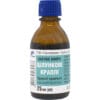
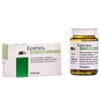
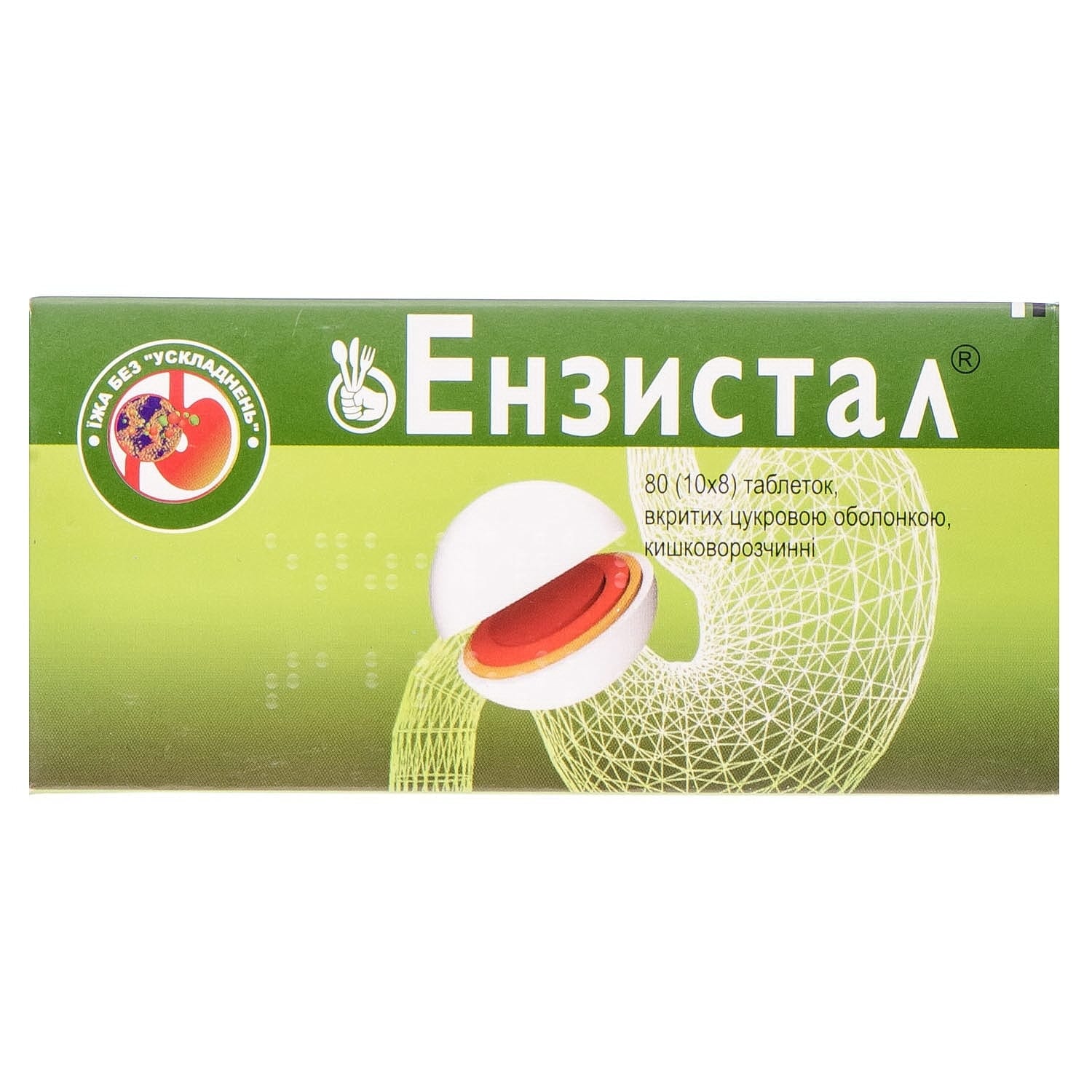
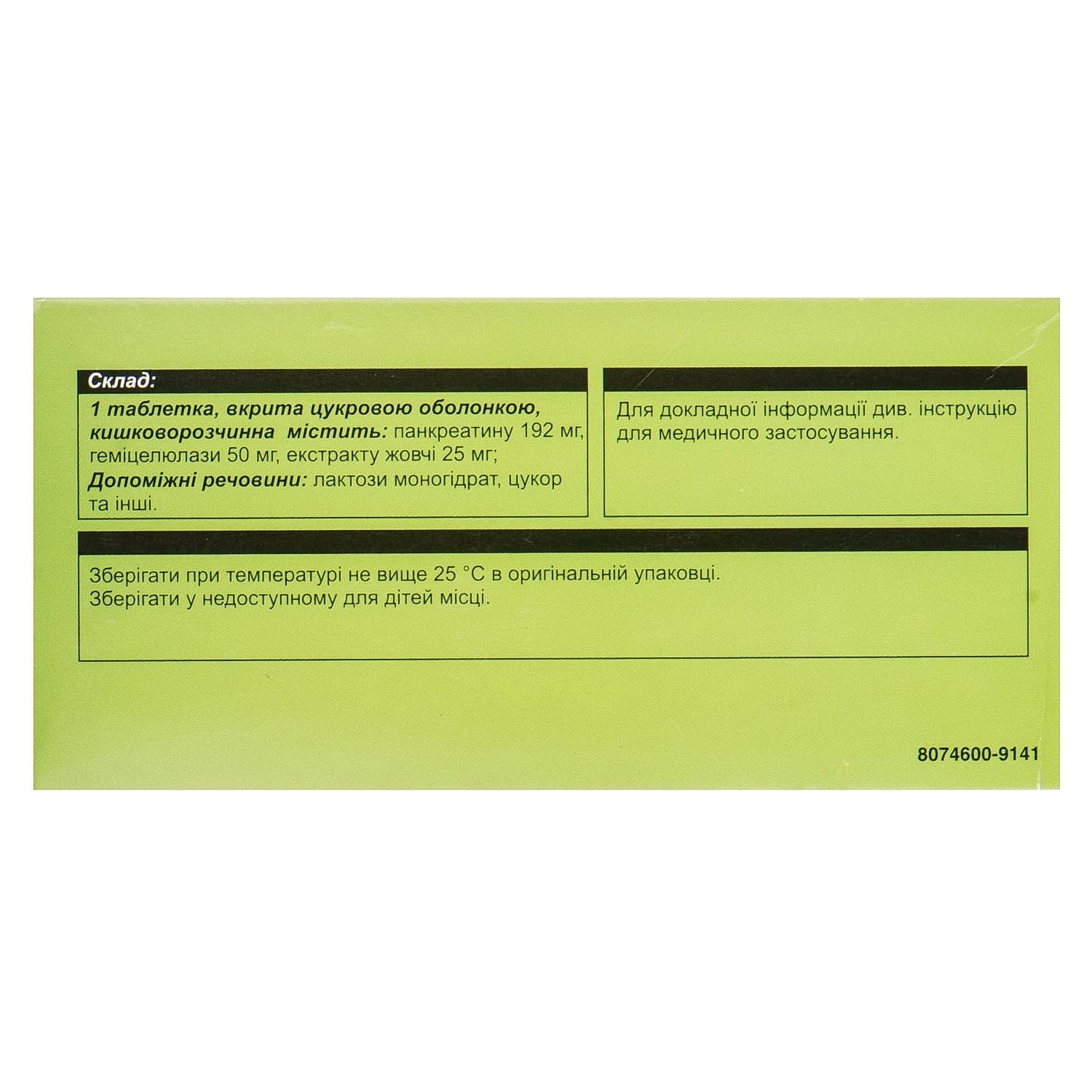
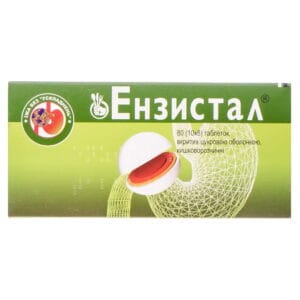
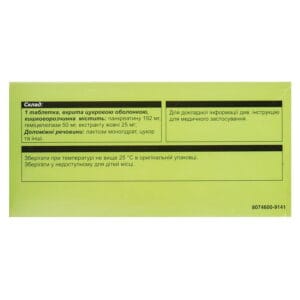
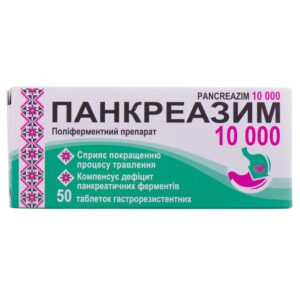
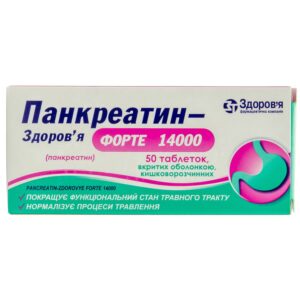

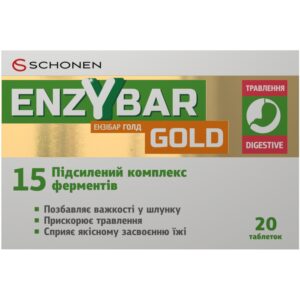
Reviews
There are no reviews yet.